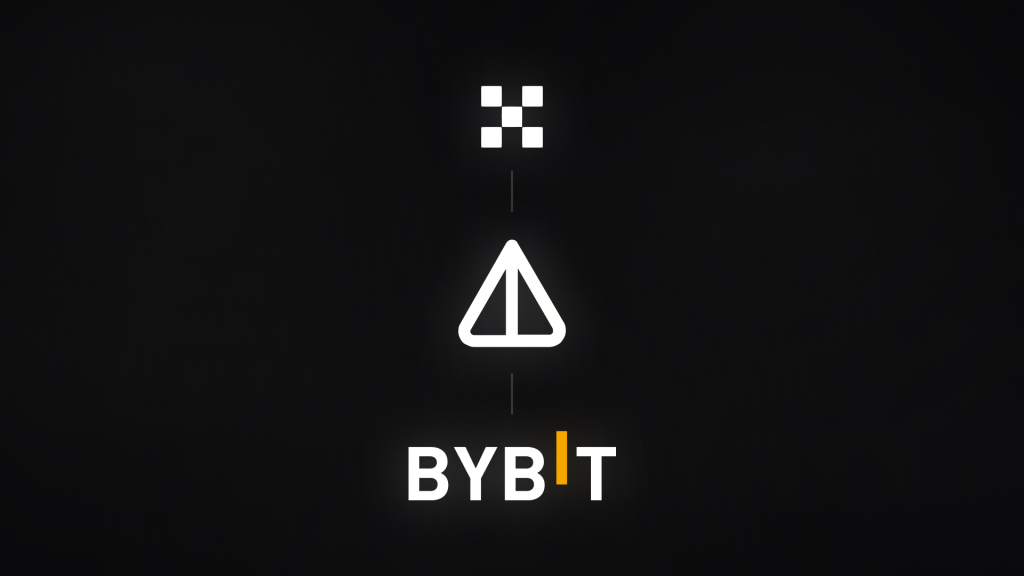Bitcoin (BTC) and Ethereum (ETH) are the two most popular cryptocurrencies in the world, with a combined market capitalization of over $750 billion as of August 2023. Both of them have attracted millions of investors who believe in their potential to revolutionize the way we exchange value, store data, and run applications on the internet. But which one is a better investment for the future? Which one has more solid foundations, more promising features, and more room for growth?
In this article, we will compare Bitcoin and Ethereum in terms of their history, technology, use cases, scalability, security, and price performance. We will also discuss some of the advantages and disadvantages of investing in each of them, as well as some of the factors that may influence their future development. By the end of this article, you should have a better understanding of the similarities and differences between Bitcoin and Ethereum, and be able to make an informed decision about which one suits your investment goals better.
History
Bitcoin was launched in January 2009 by an anonymous person or group using the pseudonym Satoshi Nakamoto. It was the first cryptocurrency to implement a decentralized ledger system called blockchain, which records all transactions and ensures their validity without the need for a central authority or intermediary. Bitcoin’s main purpose is to serve as a peer-to-peer electronic cash system that allows users to send and receive payments without intermediaries or censorship.
Ethereum was launched in July 2015 by a team of developers led by Vitalik Buterin, a Russian-Canadian programmer and co-founder of Bitcoin Magazine. Ethereum is not just a cryptocurrency, but also a platform that enables users to create and run smart contracts and decentralized applications (dApps) using blockchain technology. Smart contracts are self-executing agreements that can encode any kind of logic and rules, while dApps are applications that run on the Ethereum network without any central control or interference. Ethereum’s main purpose is to provide a global, open-source platform for innovation and collaboration.
Technology
Bitcoin and Ethereum are both based on blockchain technology, but they have different technical specifications and features that make them suitable for different purposes. Here are some of the key differences between them:
- Consensus mechanism: Bitcoin uses a proof-of-work (PoW) algorithm to secure its network and validate transactions. PoW requires miners to compete with each other to solve complex mathematical problems using their computing power. The first miner who solves the problem gets to add a new block of transactions to the blockchain and receive a reward in bitcoins. PoW ensures that only valid transactions are recorded on the blockchain and that no one can tamper with or reverse them. However, PoW also consumes a lot of energy and resources, which limits Bitcoin’s scalability and environmental sustainability.
- Ethereum currently uses PoW as well, but it is planning to switch to a proof-of-stake (PoS) algorithm called Casper in the near future. PoS does not require miners to use their computing power to secure the network, but instead relies on validators who stake their ether (ETH) tokens to participate in the consensus process. Validators are randomly selected to propose and vote on new blocks, and they receive rewards proportional to their stake. PoS is expected to improve Ethereum’s scalability, security, efficiency, and environmental friendliness.
- Transaction speed: Bitcoin can process about 7 transactions per second (tps), while Ethereum can handle about 15 tps. Both of these numbers are far lower than the capacity of traditional payment systems like Visa or PayPal, which can handle thousands of tps. This means that both Bitcoin and Ethereum suffer from congestion and high fees when the network is busy.
- However, both networks are working on implementing various solutions to increase their transaction speed and scalability. For example, Bitcoin has adopted Segregated Witness (SegWit), which reduces the size of transactions and allows more of them to fit in a block. Bitcoin also has the Lightning Network, which is a second-layer solution that enables instant and low-cost transactions between users without relying on the blockchain. Ethereum has introduced sharding, which splits the network into multiple parallel chains that can process transactions independently and faster. Ethereum also has layer-2 solutions like Plasma and zk-Rollups, which move some transactions off-chain and only use the blockchain for verification.
- Programming language: Bitcoin uses a scripting language called Script, which is limited in functionality and expressiveness. Script only allows users to perform basic operations like sending and receiving bitcoins, locking and unlocking funds with cryptographic keys, and verifying signatures. Script does not support complex computations, loops, or conditional statements.
- Ethereum uses a Turing-complete programming language called Solidity, which is much more powerful and flexible than Script. Solidity allows users to create and execute any kind of logic and rules that they can imagine, such as smart contracts and dApps. Solidity also supports libraries, inheritance, interfaces, and other advanced features.

Use Cases
Bitcoin and Ethereum have different use cases and target markets, which reflect their different visions and goals. Here are some of the main use cases for each of them:
- Bitcoin: Bitcoin’s primary use case is to serve as a store of value and a medium of exchange. Bitcoin aims to become a global, decentralized, and censorship-resistant alternative to fiat money that can preserve and increase its value over time. Bitcoin also strives to be a safe haven asset that can hedge against inflation, currency devaluation, and geopolitical risks. Bitcoin is often compared to gold, as they share some similar properties such as scarcity, durability, and portability.
- Bitcoin also has some secondary use cases that derive from its store of value and medium of exchange functions. For example, Bitcoin can be used for remittances, cross-border payments, micropayments, donations, tipping, online shopping, and more. Bitcoin can also enable financial inclusion and empowerment for people who lack access to traditional banking services or live under oppressive regimes.
- Ethereum: Ethereum’s primary use case is to serve as a platform for smart contracts and dApps. Ethereum aims to become a global, decentralized, and programmable computer that can run any kind of code and application without intermediaries or censorship. Ethereum also strives to be a catalyst for innovation and collaboration in various fields and industries such as finance, gaming, art, social media, identity, supply chain, healthcare, and more.
- Ethereum also has some secondary use cases that derive from its platform function. For example, Ethereum can be used for issuing and trading digital tokens that represent various assets or rights such as cryptocurrencies, stablecoins, utility tokens, security tokens, non-fungible tokens (NFTs), etc. Ethereum can also enable decentralized finance (DeFi), which is a movement that aims to create open and transparent financial services that are accessible to anyone without intermediaries or discrimination.
Scalability
Scalability is one of the biggest challenges and opportunities for both Bitcoin and Ethereum. As the demand for their services grows, both networks need to find ways to accommodate more users and transactions without compromising their security or decentralization. However, scalability is not an easy problem to solve, as it involves trade-offs between speed, cost, and quality.
As mentioned earlier, both Bitcoin and Ethereum currently use PoW as their consensus mechanism, which limits their transaction speed and capacity. Both networks are also working on implementing various solutions to improve their scalability, such as SegWit, Lightning Network, sharding, layer-2 solutions, etc. However, these solutions are not yet fully developed or widely adopted by the users and developers.
Another factor that affects scalability is the size of the blockchain itself. As more transactions are recorded on the blockchain, it becomes larger and harder to store and synchronize by the nodes that run the network. This increases the hardware requirements and costs for running a node, which may discourage some participants from joining or staying in the network. This may reduce the network’s decentralization and security over time.
Bitcoin’s blockchain size is currently about 350 GB, while Ethereum’s blockchain size is about 1 TB. Both of these numbers are expected to grow as more transactions are processed on the networks. However, Ethereum’s blockchain size may grow faster than Bitcoin’s due to its higher transaction volume and complexity.

Security
Security is another crucial aspect of both Bitcoin and Ethereum. As decentralized networks that operate without any central authority or intermediary, both of them need to ensure that their transactions are valid and irreversible, that their networks are resilient to attacks or failures, and that their users’ funds and data are protected from theft or loss.
Both Bitcoin and Ethereum rely on cryptography and consensus algorithms to secure their networks and transactions. However, they also face different types of threats and vulnerabilities that may compromise their security. Here are some of the main security issues for each of them:
- Bitcoin: Bitcoin’s main security threat is the 51% attack , which occurs when a single entity or group controls more than 50% of the network’s hashing power. This would allow them to revert or modify any transactions that occurred after they gained control, double-spend their bitcoins, prevent other transactions from being confirmed, or launch a denial-of-service attack on the network. A 51% attack is very unlikely to happen on Bitcoin, as it would require a huge amount of computing power and resources, and it would also damage the attacker’s own interests. However, it is not impossible, especially for smaller or newer cryptocurrencies that have less hashing power and security.
Another security issue for Bitcoin is the risk of losing or forgetting the private keys that control the bitcoins. Private keys are essentially passwords that allow users to access and spend their bitcoins. If a user loses or forgets their private key, they will lose access to their bitcoins forever, as there is no way to recover or reset them. This has happened to many users who have lost millions of dollars worth of bitcoins due to hardware failures, software errors, thefts, hacks, or human errors.
- Ethereum: Ethereum’s main security threat is the smart contract vulnerability , which occurs when a smart contract contains bugs or flaws that can be exploited by malicious actors. Smart contracts are essentially programs that run on the Ethereum network and execute according to their code. However, if the code is poorly written or audited, it may contain loopholes or errors that can allow attackers to manipulate the contract’s behavior, steal funds, or cause other damages. This has happened to several high-profile cases on Ethereum, such as the DAO hack in 2016, which resulted in the loss of $50 million worth of ether and led to a controversial hard fork of the network.
Another security issue for Ethereum is the scalability trade-off , which occurs when increasing the network’s capacity comes at the expense of its security or decentralization. As mentioned earlier, Ethereum is working on implementing various solutions to improve its scalability, such as PoS, sharding, layer-2 solutions, etc. However, these solutions may also introduce new challenges or risks for the network’s security or decentralization. For example, PoS may make the network more vulnerable to bribery or collusion attacks, sharding may reduce the network’s cohesion or consistency, and layer-2 solutions may rely on trusted third parties or compromise on transparency.

Price Performance
Price performance is one of the most important and visible indicators of both Bitcoin and Ethereum’s success and attractiveness as investments. Both cryptocurrencies have experienced significant price fluctuations and volatility over the years, as they are influenced by various factors such as supply and demand, market sentiment, innovation, regulation, competition, etc.
Bitcoin’s price has increased from less than $1 in 2010 to over $60,000 in 2021, making it one of the best-performing assets in history. Bitcoin has also outperformed most other cryptocurrencies in terms of market dominance and adoption. Bitcoin’s market capitalization is currently over $567 billion, accounting for about 48.8% of the total cryptocurrency market value. Bitcoin is also widely accepted and used by millions of users and merchants around the world, as well as by institutional investors and corporations who see it as a store of value or a hedge against inflation. However, Bitcoin’s price is also subject to high volatility and unpredictability, as it can change dramatically in a short period of time due to various events or factors. For example, Bitcoin’s price dropped by about 40% in March 2020 due to the COVID-19 pandemic, and rose by about 300% in 2020 due to the halving event and increased institutional demand.
Ethereum’s price has increased from less than $1 in 2015 to over $4,000 in 2021, making it one of the fastest-growing and most innovative cryptocurrencies in history. Ethereum has also surpassed most other cryptocurrencies in terms of network activity and development. Ethereum’s network processes more transactions than any other blockchain, and hosts more than 2,000 dApps that serve various purposes and industries. Ethereum also supports more than 200,000 ERC-20 tokens that represent various assets or rights, as well as more than 40 billion dollars worth of DeFi protocols that provide various financial services. However, Ethereum’s price is also subject to high volatility and uncertainty, as it can change significantly in a short period of time due to various events or factors. For example, Ethereum’s price dropped by about 90% in 2018 due to the ICO bubble burst, and rose by about 600% in 2020 due to the DeFi boom and increased network upgrades.
Conclusion
Bitcoin and Ethereum are both remarkable and revolutionary projects that have changed the world of finance and technology. Both of them have their own strengths and weaknesses, advantages and disadvantages, opportunities and challenges. Both of them have different visions and goals, different technologies and features, different use cases and markets, different scalability and security issues, and different price performance and potential.
Therefore, there is no definitive answer to the question of which one is a better investment for the future. It depends on various factors such as your risk appetite, time horizon, investment objectives, personal preferences, etc. The best way to decide is to do your own research, analysis, and evaluation, and make an informed and rational decision based on your own criteria and judgment.
However, one thing is certain: both Bitcoin and Ethereum are here to stay, and they will continue to grow and evolve in the coming years. They will face new challenges and opportunities, new competitors and allies, new innovations and regulations. They will also create new value and wealth for their users and investors, as well as for the society and the world at large.
Therefore, whether you choose to invest in Bitcoin or Ethereum, or both, or neither, you should always keep an eye on their development and progress, as they will shape the future of money and the internet.
This is the end of the article. I hope you enjoyed reading it and learned something new. Thank you for your attention.






I choose Bitcoin, because it’s older and the first coin before than everything.
The title should had be the Satoshi vs Vitalik, so, answer is clear i guess